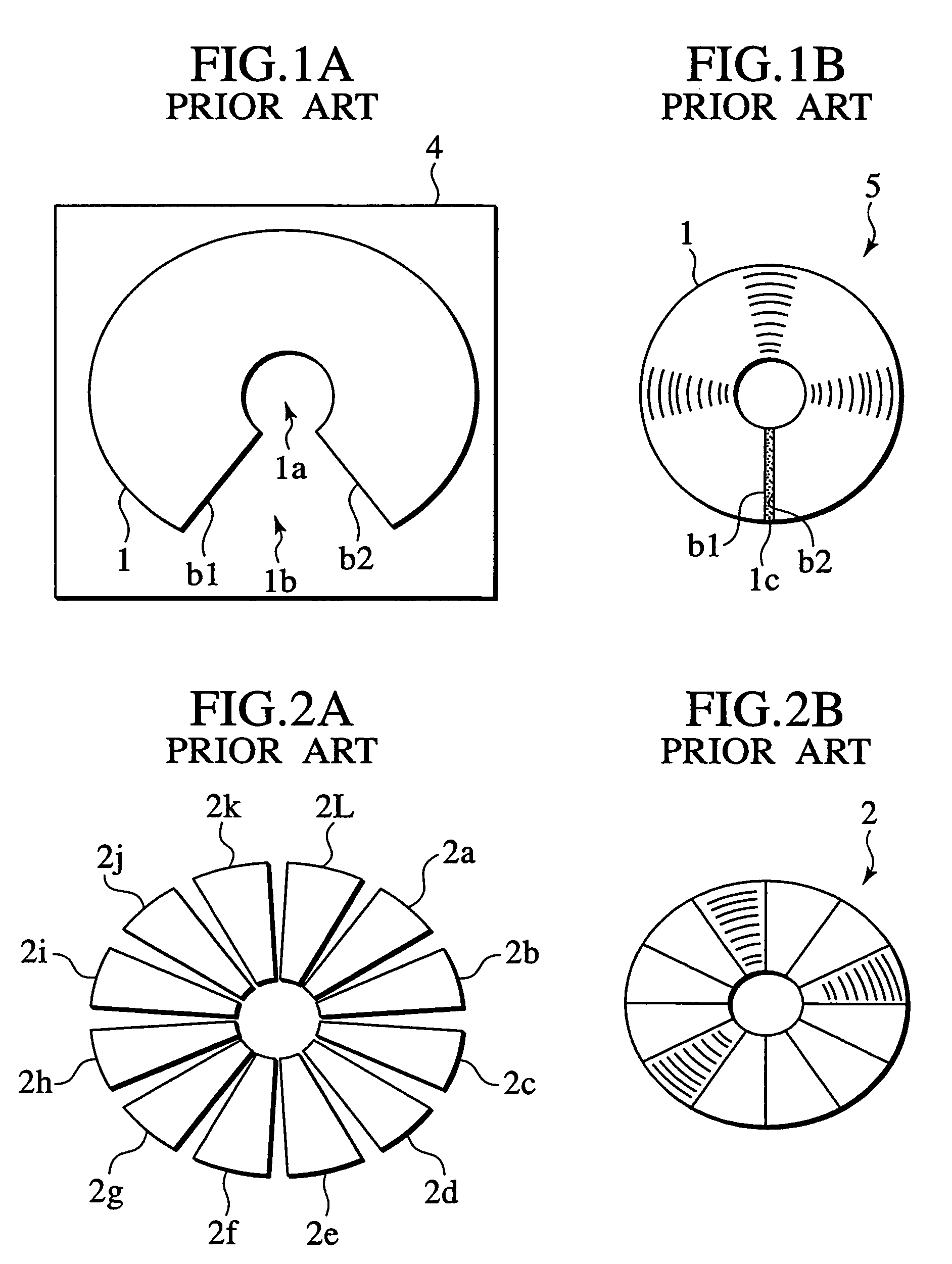Speaker diaphragms, manufacturing methods of the same, and dynamic speakers
a technology of diaphragms and diaphragms, which is applied in the direction of transducer diaphragms, electromechanical transducers, instruments, etc., can solve the problems of poor stiffness (young's modulus), deterioration of sound pressure frequency characteristics, and loss of feeling of being at a live performance or the like, etc., to achieve sufficient moldability and mass productivity, improve sound characteristics, and improve sound quality
- Summary
- Abstract
- Description
- Claims
- Application Information
AI Technical Summary
Benefits of technology
Problems solved by technology
Method used
Image
Examples
first embodiment
[0090]First, as a preparatory step for speaker diaphragm manufacturing, as shown in FIG. 3A, a log 6, material wood for the speaker diaphragm, is thinly peeled along the circumference thereof with a peeling knife 7 by the rotary method to produce a wooden sheet 61. The wooden sheet 61 is cut into a suitable shape and size larger than a molding portion, which will be made into an actual diaphragm, and a wooden sheet 10 with large straight grain is formed as shown in FIG. 3B. Here, the wooden sheet 10 in FIG. 3B is an enlarged view of a part of the wooden sheet 61 in FIG. 3A. The dashed-line circle portion in the wooden sheet 10 is the molding portion to be made into the actual diaphragm. For example, in a case of a speaker diaphragm with a bore diameter of about 8 cm, a square or a rectangle having a side of about 12 to 14 cm, or a circle having a diameter of about 12 cm will be employed.
[0091]Next, a manufacturing method according to a first embodiment will be described using FIGS. ...
second embodiment
[0114]A manufacturing method according to a second embodiment will be described with a focus on different points from the manufacturing method according to the first embodiment, and description of common points will be omitted as appropriate. A feature of the second embodiment is that, not only the cloth or paper 13 on one surface of the wooden sheet 10, but also a cloth or paper 13′ is adhered in the center portion of the opposite side thereof in order to further prevent cracks caused upon the hot press molding and to improve strength of the neck portion around the center hole 25 for the voice coil of the diaphragm.
[0115]That is, as shown in FIG. 9A, the cloth or paper 13 is adhered entirely on one surface (back surface) of the wooden sheet 10, and the cloth or paper 13′, which is in a circular shape whose size is the same as or smaller than the bore size of a dust cap 36 (shown in FIG. 9D) and is larger than the center hole 25 (shown in FIG. 9C), is adhered with an adhesive in the...
third embodiment
[0117]A manufacturing method according to a third embodiment will be described with a focus on different points from the manufacturing method according to the first embodiment, and description of common points will be omitted as appropriate. The materials for the speaker diaphragms 30 and 40 according to the manufacturing methods of the first and second embodiments are anisotropic wood. Therefore, as described above, almost no split vibrations occur. In the third embodiment, a speaker diaphragm 50 with conical domes is formed in order to completely suppress split vibrations.
[0118]That is, as shown in FIG. 10A, upon the second hot press molding with a press device P2′, the adhered sheet 15 or the wooden sheet 10 is hot press molded using an upper mold 34′ having recessed portions 38 and a lower mold 35′ having swollen portions 39 (second pressing step (h3)). The other steps are the same as those of the manufacturing method of the first embodiment.
[0119]In this way, as shown in FIG. 1...
PUM
| Property | Measurement | Unit |
|---|---|---|
| velocity | aaaaa | aaaaa |
| thickness | aaaaa | aaaaa |
| velocity | aaaaa | aaaaa |
Abstract
Description
Claims
Application Information
 Login to View More
Login to View More - R&D
- Intellectual Property
- Life Sciences
- Materials
- Tech Scout
- Unparalleled Data Quality
- Higher Quality Content
- 60% Fewer Hallucinations
Browse by: Latest US Patents, China's latest patents, Technical Efficacy Thesaurus, Application Domain, Technology Topic, Popular Technical Reports.
© 2025 PatSnap. All rights reserved.Legal|Privacy policy|Modern Slavery Act Transparency Statement|Sitemap|About US| Contact US: help@patsnap.com



